With its history, beautiful architecture, and delicious cuisine, Valencia has attractions for all types of visitors. And, as the third-largest city in Spain, it holds enough sites to keep you occupied for days. Hence, you may need help to choose what to see in Valencia in 2 days.
In this guide, we will take you through some of the must-see attractions in Valencia. Whether you’re a history buff, an art enthusiast exploring contemporary creations, a nature lover, or a foodie sampling local delights, our list of top attractions will make your time in Valencia unforgettable.
Top Attractions to See in Valencia in 2 Days
1. Valencia Cathedral
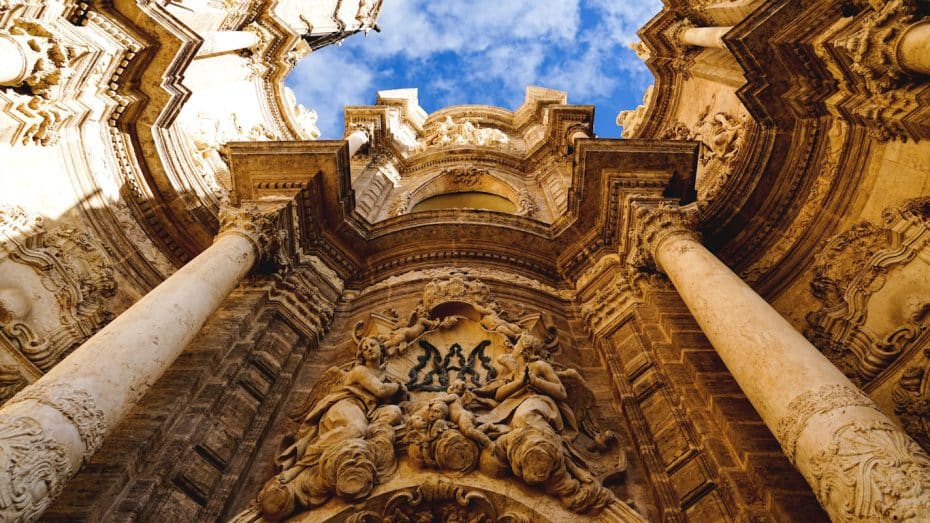
The Valencia Cathedral, officially known as the Metropolitan Cathedral-Basilica of the Assumption of Our Lady of Valencia, is one of the city’s main attractions. The cathedral was constructed between 1252 and 1482 in Plaza de la Reina, surrounded by the Ciutat Vella district.
This Roman Catholic cathedral is on the site of a former mosque and possesses architectural influences from the Gothic, Romanesque, and Baroque eras. The structure houses several noteworthy attractions, such as the Holy Grail Chapel, which contains an artifact believed to be the Holy Chalice used by Jesus during the Last Supper. Another significant element is the Miguelete Tower, which has panoramic views of the city upon ascending its 207 steps. The cathedral also holds artwork by renowned artists like Francisco Goya and Paolo da San Leocadio.
To get to the Valencia Cathedral, you can use the metro, with Xativa and Colon stations being the nearest stations. The cathedral’s opening hours are Monday to Saturday (10:00 am – 6:30 pm) and Sundays (2:00 pm – 6:30 pm) for general visits.
2. Lonja de la Seda (Silk Exchange)
The Lonja de Seda, also known as the Silk Exchange, is a significant historical building in Valencia. Built between 1482 and 1548, it is a prime example of Valencian Gothic architecture. The building’s designers were architects Joan Ivarra and Pere Compte, and it features intricate carvings and ornate details. In 1996, UNESCO declared it a World Heritage Site due to its representation of the power and wealth of Valencia during the Golden Age of trade.
Several areas and rooms are worth exploring inside the Lonja de Seda. The main hall, known as Sala de Contratación or Contracts Room, exhibits impressive spiral columns that reach a vaulted ceiling and represent palm trees. Adjoining the main hall is the Consulado del Mar or Consulate of the Sea, housing beautiful rooms used for maritime trade regulation in the past. Lastly, an orange tree-filled courtyard, Patio de los Naranjos, is outside, offering a space for relaxation.
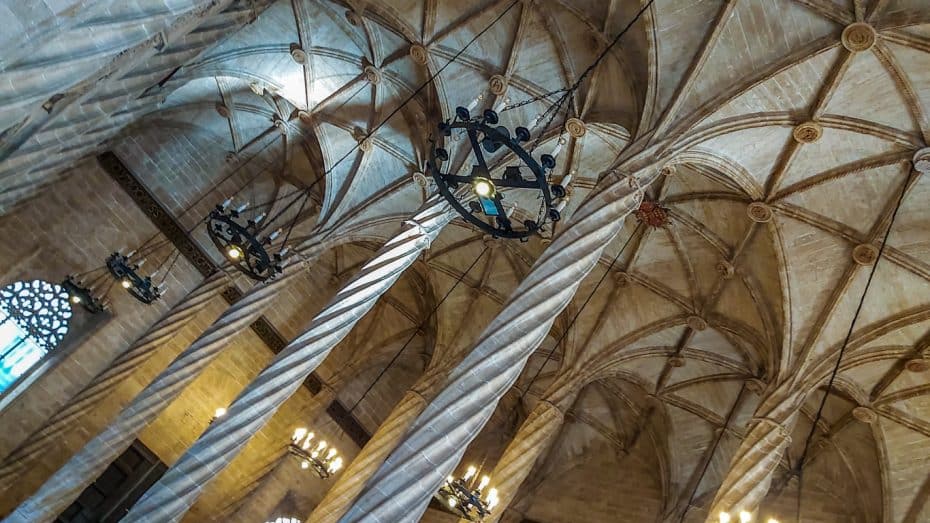
Located within the Ciutat Vella district of Valencia, the Lonja de Seda is near the Central Market (Mercado Central). You can reach this attraction by bus lines 7 and 27 or the Turia Metrorbital station. Walking from Plaça de l’Ajuntament takes approximately six minutes. The building occupies a space at Carrer de la Llotja Street, surrounded by vibrant plazas such as Plaza del Mercado and Plaza de los Fueros.
The Lonja de Seda is open to visitors between 9:30 am and 7:00 pm from Tuesday to Saturday. General admission costs €2 per person.
3. Ciutat de les Arts i les Ciències
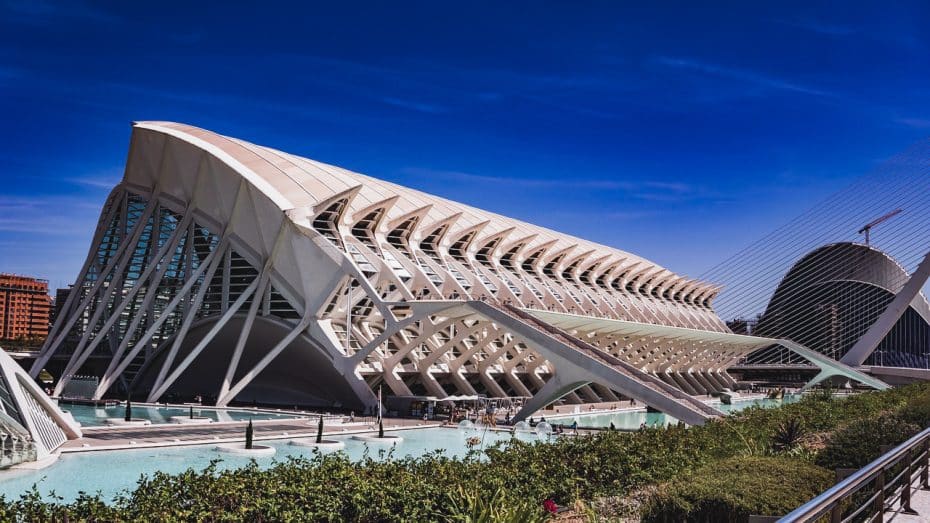
The Ciutat de les Arts i les Ciències (City of Arts and Sciences) is an essential destination for anyone visiting Valencia, even on a brief two-day trip. Designed by architect Santiago Calatrava, the complex reflects Valencia’s commitment to culture and science. Located in the eastern part of the city, the center occupies the former riverbed of the Turia River along Avenida del Profesor López Piñero.
This architectural site consists of several structures. For example, the Hemisfèric, which opened in 1998, contains an IMAX cinema and planetarium. Likewise, we will discuss several other cultural institutions inside the Ciutat de les Arts i les Ciències later in this post.
The Ciutat de les Arts i les Ciències is accessible by public transportation through bus lines number 35 and 95 as well as metro line 1 or the Alameda metro station. The complex is typically open from Monday to Sunday throughout the year, with daily exhibitions from 10 am to late evening.
4. Oceanogràfic
The Oceanogràfic is an oceanarium within the Ciutat de les Arts i les Ciències. The Oceanogràfic opened in 2003 and is the largest oceanarium in Europe.
Covering an area of approximately 1,900 square meters and containing around 42 million liters of water, the Oceanogràfic is a significant attraction for marine life enthusiasts and researchers. Its exhibits display diverse aquatic habitats home to more than 45,000 creatures from over 500 species. Noteworthy exhibitions include a shark tunnel with several shark species and displays of penguins, walruses, sea lions, beluga whales, medusas, and seals.

The aquarium opens daily throughout the year but has seasonal hours: June through September from 10 am to 8 pm (with extended hours in July-August until midnight); the rest of the year from 10 am to 6 pm or sometimes until 8 pm. Admission fees vary depending on age groups, with adult entry costing €32 ($39).
5. Mercado Central
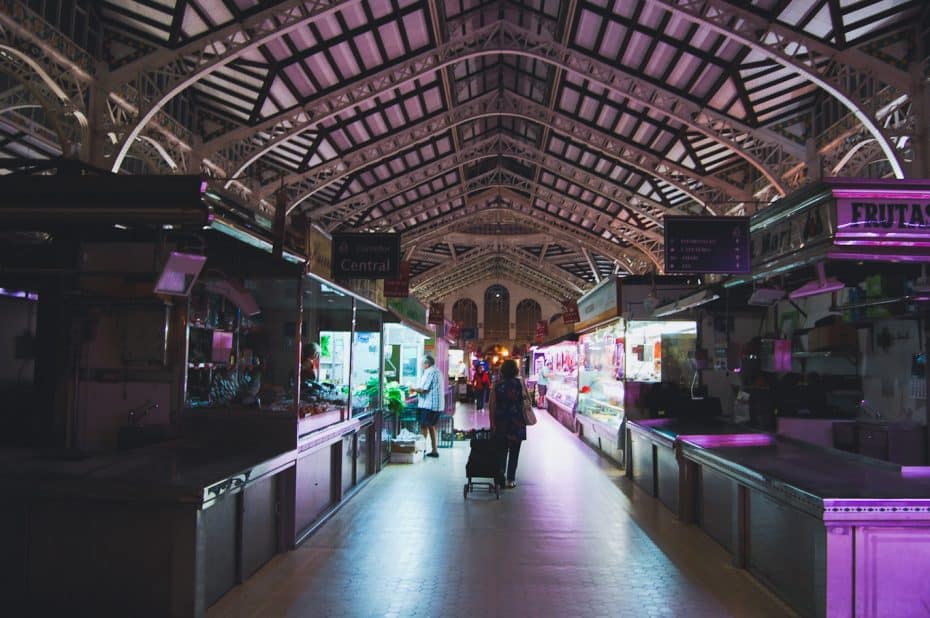
The Mercado Central, or Central Market of Valencia, dates back to 1928. Located at Plaza Ciudad de Brujas, it is easily accessible by public transportation, with the closest metro station being Xàtiva.
This historical market building features a modernist architectural style designed by architects Alejandro Soler March and Francisco Guardia Vial. Spanning an area of approximately 8,000 square meters, it houses more than 400 small businesses that sell fresh produce, including fruits, vegetables, meats, seafood, and more. Notable sections within the market include the fish market and the Caviar House.
The Mercado Central operates from Monday to Saturday from 7:00 am to 3:00 pm.
6. Jardín del Turia
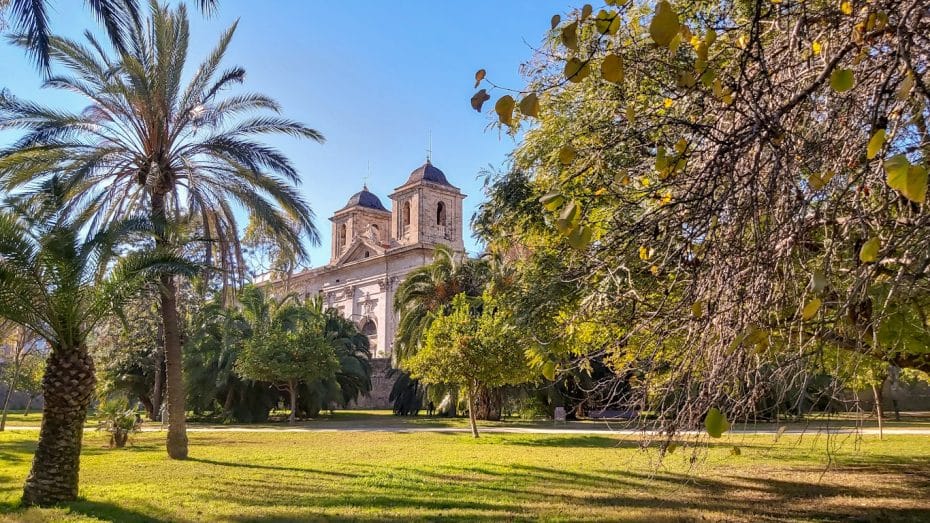
Jardín del Turia is among the top attractions to see in Valencia in 2 days. The garden spans 110 hectares and stretches nine kilometers of the former Turia River, which, following a catastrophic flood, went under a redirection project. It is between Bioparc Valencia to the northwest and Ciudad de las Artes y las Ciencias to the southeast.
The park’s construction began in 1986 and was completed in several phases over subsequent decades. Several monuments, museums, playgrounds, and athletic facilities exist throughout Jardín del Turia. A notable landmark within Jardín del Turia is the Palau de la Música, an extraordinary concert hall built in 1987 by architect José María Paredes.
Jardín del Turia has multiple entrances and is well-connected to public transportation. Bicycles are available to rent throughout the city to explore the garden’s winding paths. The park is open daily from early morning until midnight, offering ample daylight hours for sightseeing.
7. Barrio del Carmen
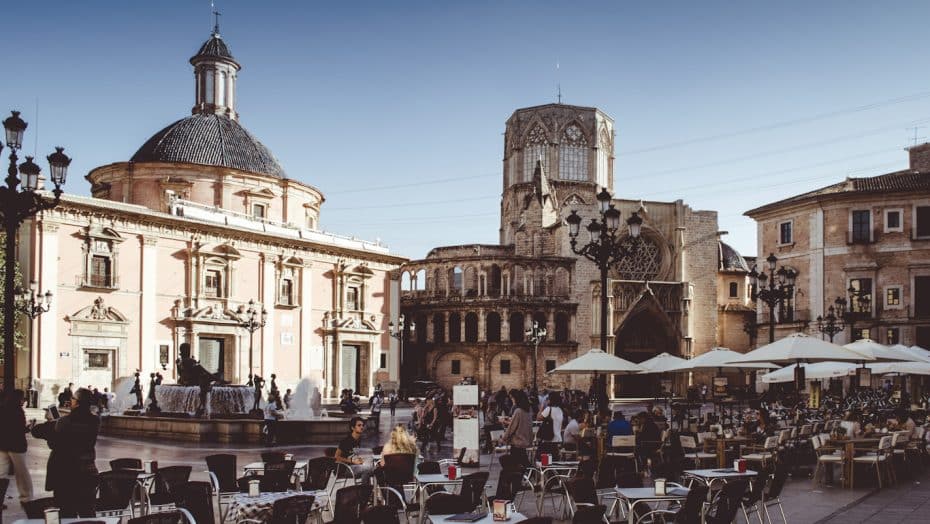
Barrio del Carmen, located in Valencia’s Ciutat Vella (Old City) district, is a significant historical area dating back to Roman times. The neighborhood is near the Turia River and the Torres de Quart, once part of the ancient city walls.
This site played a crucial role in Valencia’s history, as it once encompassed the town’s Muslim and Christian parts. During the 15th and 16th centuries, it was considered a prestigious location marked by impressive palaces and houses of notable Valencian families.
Points of interest within Barrio del Carmen include its museums such as IVAM (Valencian Institute of Modern Art), street art adorning Calle Moret and Calle de Baja, various craftwork shops at Calle de la Estamenyería Vieja selling handmade crafts, and picturesque plazas like Plaza del Tossal and Plaza Redonda.
This neighborhood is one of the best areas to stay in Valencia.
8. IVAM – Instituto Valenciano de Arte Moderno
The IVAM, or Instituto Valenciano de Arte Moderno, also needed a spot on this list with the things to see in Valencia in 2 days. Established in 1989, this modern art museum showcases 20th and 21st-century art. Its location in the city is easy to find, situated on Calle de Guillem de Castro, near the Turia Gardens.
Within the IVAM, you can see works by renowned artists such as Julio González and Ignacio Pinazo. You can also find art by figures, including Pablo Picasso, Alexander Calder, and Roy Lichtenstein. Besides featuring well-known artists, the museum supports emerging local talent through dedicated exhibition spaces.
The closer metro stations to the IVAM are Ángel Guimerà (Lines 1, 3, and 5) and Túria (Line 1). The museum is open Tuesday through Sunday from 10 am to 7 pm except on Fridays when it is open till 9 pm. On Mondays, it remains closed. You can visit the IVAM for free.
9. Palau de les Arts Reina Sofía
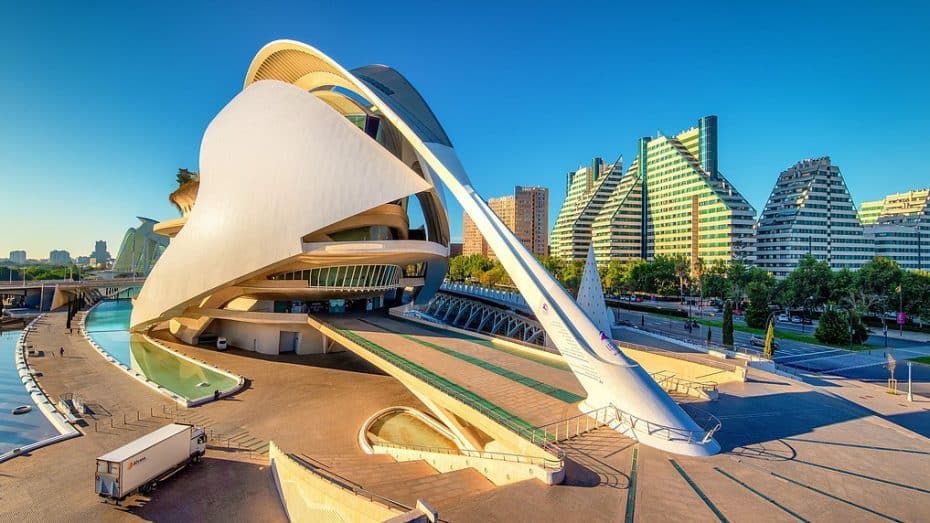
Opened in 2005, this opera house was designed by the renowned architect Santiago Calatrava as part of the City of Arts and Sciences complex.
The Palau de les Arts Reina Sofía stands out with its futuristic design, featuring a 246-foot-high (75 meters) curvature covered in white trencadis ceramic tiles. Inside this striking structure are four performance spaces: the Main Hall, Masterclass Room, Aula Magistral, and Martín y Soler Theatre.
The Palau de Les Arts has hosted renowned operatic productions since its inception and is a prominent venue for famous artists and orchestras. Aside from opera performances, this cultural center also presents dance shows, symphonies, and other musical events.
10. Ruzafa
The Ruzafa neighborhood is in the southern portion of Valencia’s Eixample district. Its history dates back to the Moorish era when it was a rural area, and by the 19th century, Ruzafa had gained prominence as an artistic and multicultural hub.
Nowadays, the neighborhood is known for its architectural landmarks, such as the Church of San Valero, built in the late 17th century, and the modernist-style Ruzafa Market, built in 1928. Alongside these historical sites, Ruzafa also houses green spaces like Central Park (Parque Central). Likewise, the Espai Tactel Gallery and Espai Rambleta are standout venues in Ruzafa that offer contemporary art exhibitions and performance arts.
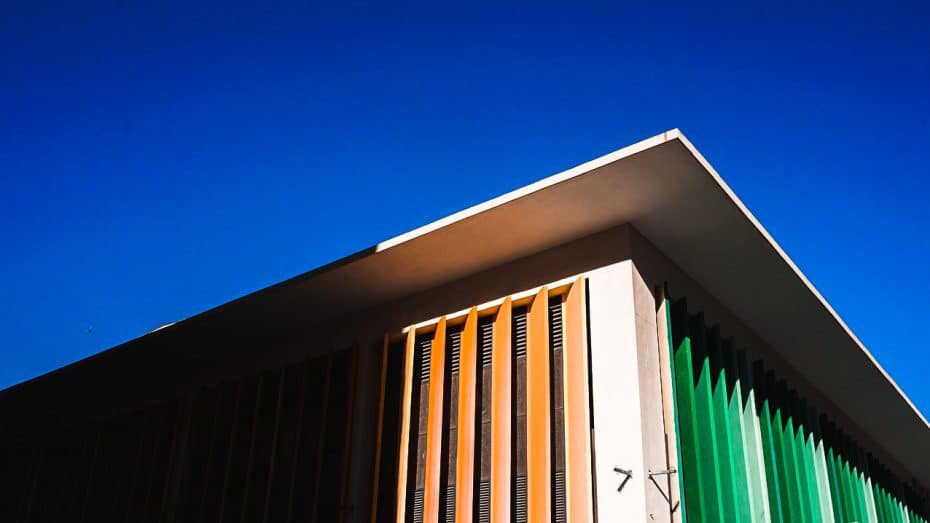
The Estación del Norte (North Station) and Joaquín Sorolla Station are near this neighborhood. In addition, several buses run through the area; lines 7, 19, and 81 are among those with stops near Ruzafa’s main attractions.
11. La Albufera Natural Park
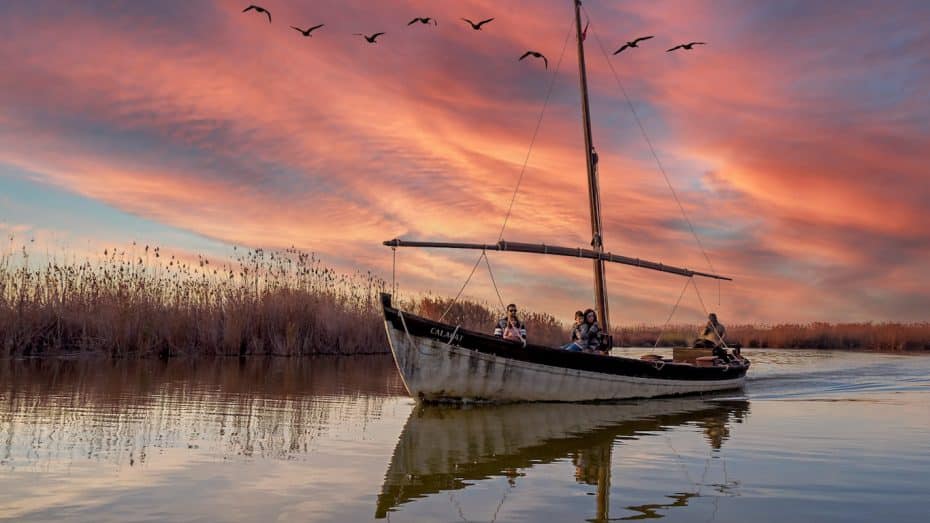
Albufera Natural Park, located 11 kilometers south of Valencia, is a protected area consisting of a large lagoon and surrounding marshlands, covering an area of 21,120 hectares. Established in 1986 as a natural park, it plays a significant role in biodiversity conservation and provides a habitat for numerous species of flora and fauna.
The park’s history dates back to ancient times, with evidence of human activity dating back more than 5,000 years. In the 20th century, it was designated as a wetland under the Ramsar Convention, emphasizing its importance for migratory birds and conserving natural habitats.
Among the park’s highlights are small islands used by birds for breeding purposes. Numerous bird species, such as herons, coots, flamingos, and ducks, can be seen in the park throughout the year. Moreover, Rice paddies located within the park contribute significantly to Spain’s agricultural heritage.
One option to reach La Albufera Natural Park from Valencia city center is to take the EMT bus line 25, heading towards El Perellonet or El Palmar.
12. Museu de les Ciències Príncipe Felipe
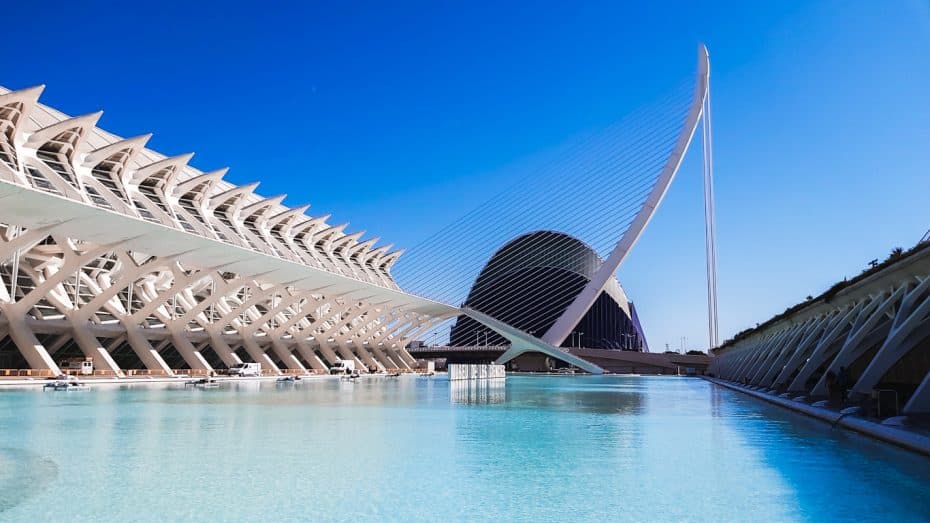
The Museu de les Ciències Príncipe Felipe, located in the City of Arts and Sciences complex, opened its doors on November 13, 2000. The architect Santiago Calatrava designed this unique building resembling the skeleton of a whale.
This museum primarily focuses on science, technology, and the environment. You can explore multiple interactive exhibits within its 40000 square meters area. Some popular exhibits include “The Legacy of Science,” “Chromosome Forest,” and “Zero Gravity.” Hence, this museum is great to visit if you travel to Valencia with kids.
Ticket prices range between €8 for adults and €6.20 for children.
13. Malvarrosa Beach
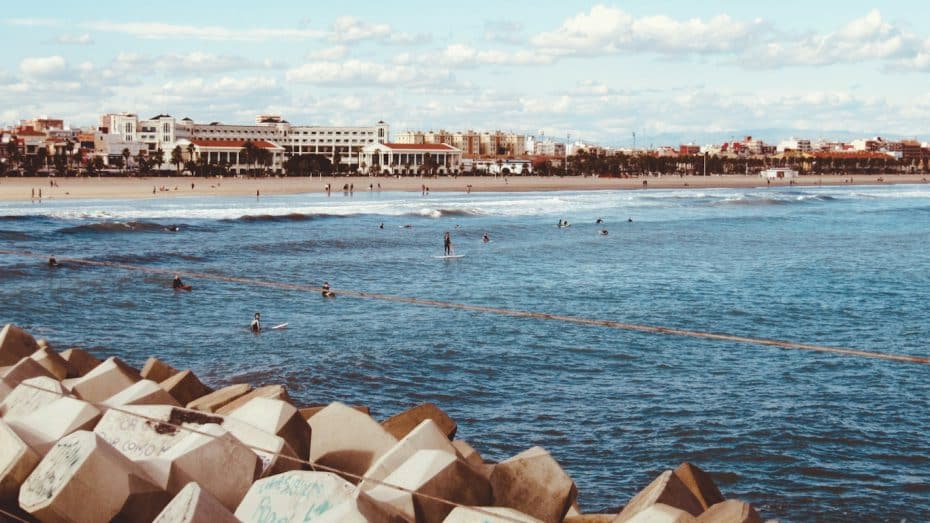
Malvarrosa Beach is an urban beach in the northern part of Valencia. The beach stretches for approximately 1.2 kilometers (0.75 miles) and is in the Poblats Marítims neighborhood. Its coastline offers fine sand and calm waters, making it a popular summer destination for sunbathing and swimming.
In 1896, renowned Spanish painter Joaquín Sorolla captured a group of fishermen working on the shore in his artwork “El Pescador.” This painting reflected the daily life of Valencians at that time and showcased Malvarrosa Beach’s significance as a fishing hub.
To reach Malvarrosa Beach, hop on bus line 32, which connects it to central Valencia. Furthermore, tram lines 4 and 6 make stops near the beach.
Many restaurants serve local Valencian cuisine, such as paella and fideuà near the beach. In addition, there are sports facilities available for those interested in staying active during their visit. The beach is particularly popular among surfers.
14. Torres de Quart and Torres de Serranos
The Torres de Quart and Torres de Serranos are two important historical landmarks in Valencia. These structures served as city gates during the medieval period when defensive walls surrounded Valencia. The Torres de Quart’s construction took place between 1441 and 1460. They have served various purposes over time, including as a prison for nobles (1478–1821) and a refuge during the Spanish Civil War (1936–1939).
Meanwhile, architect Pere Balaguer built the Torres de Serranos on Plaza de los Fueros near Jardín del Turia between 1392 and 1398. These towers’ impressive size and design had a dual purpose: to protect the city and symbolize the strength and power of Valencia.
Visiting the Torres de Quart, you can admire their intricate exterior features while witnessing the damage from historical bombardments. In contrast, tourists can climb the Torres de Serranos for panoramic views of Valencia from atop this historical site.
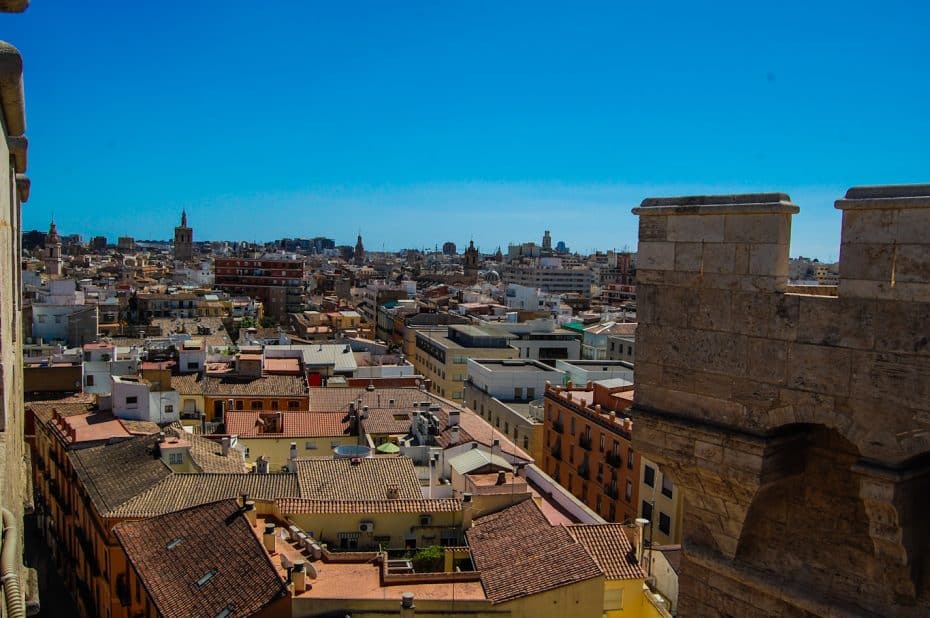
15. Gulliver Park
Gulliver Park, officially named Parque Gulliver, is a significant attraction in Valencia’s Turia Gardens (Jardín del Turia).
Designed by architect Rafael Rivera and artist Sento Llobell, the primary feature of Gulliver Park is a colossal sculpture representing Lemuel Gulliver, the protagonist of Jonathan Swift’s 1726 novel “Gulliver’s Travels.” The statue measures approximately 70 meters in length and 26 meters in width. This attraction occupies a surface area of around 12,000 square meters in the eastern section of the Turia Gardens.
The monumental sculpture of Gulliver consists of multiple levels interconnected by stairs, tunnels, and slides, which make it an interactive experience for children who play on it and explore its hidden corners. Apart from the central figure, several small-scale models depicting parts of Gulliver’s adventures are also in the park.
16. Valencia City Hall
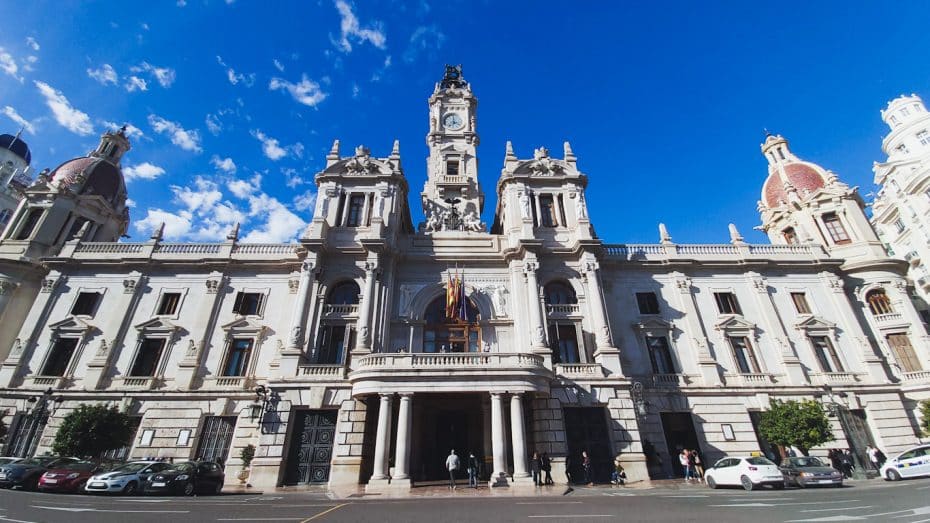
The Valencia City Hall, or Ayuntamiento de Valencia, is a vital attraction in the Plaça de l’Ajuntament. Built between 1758 and 1763, it is a fine example of Baroque architecture, designed by notable architects such as Carlos Carbonell Pañella and Francisco Mora Berenguer.
Inside the City Hall, you will find the Crystal Room (Salón de Cristal), an elegant space adorned with mirrors and chandeliers for municipal receptions and events. One noteworthy feature is a clock tower added to the facade in 1860 by architect Sebastià Monleón Estellés.
Another point of interest within the building is the Council Hall, adorned with impressive murals painted by José Vergara Gimeno illustrating critical historical events from Valencia’s past. The City Hall also hosts an exciting museum, Museo Histórico Municipal, which exhibits artifacts related to the city’s history, such as maps, flags, weapons, and paintings.
17. BIOPARC Valencia
BIOPARC Valencia, located in the western part of Valencia, is an innovative zoo. The park covers an area of 100,000 square meters and showcases around 150 animal species native to Africa. Designed by Spanish architects Félix Candela, Antonio Lamela, and José Salvador Tornel, the park aims to promote conservation, education, and biodiversity and natural ecosystems research.
The animals at BIOPARC Valencia are housed in reproductions of their natural habitats, which helps to provide a more accurate representation of life in the wild. Some notable areas within the park include the African Savannah, Wetlands (Mangrove Swamp), Equatorial Forests (Baobab Forest), and Madagascar. These zones feature elephants, lions, hippos, giraffes, and lemurs.

You can access the park via several transportation options. By public transport: bus lines 7, 64, 67, and N5 or Metrovalencia Line 3 or Line 5 (Nou d’Octubre station) are all viable ways to reach BIOPARC Valencia.
BIOPARC Valencia is open every day of the year but with varying hours depending on the season. From November to February (low season), it operates from 10:00 am to 6:00 pm. During March, April, May, and October (mid-season), it opens from 10:00 am to 7:00 pm. Finally, in June, July, August, and September (high season), the park remains open from 10:00 am until 8:00 pm. Admission fees are €23.80 for adults and €18 for children.
18. El Micalet
El Micalet, also known as Miguelete Tower, is an iconic symbol of Valencia. It stands adjacent to the Metropolitan Cathedral–Basilica of the Assumption of Our Lady of Valencia. The construction of the tower began in 1381 and finished in 1429.
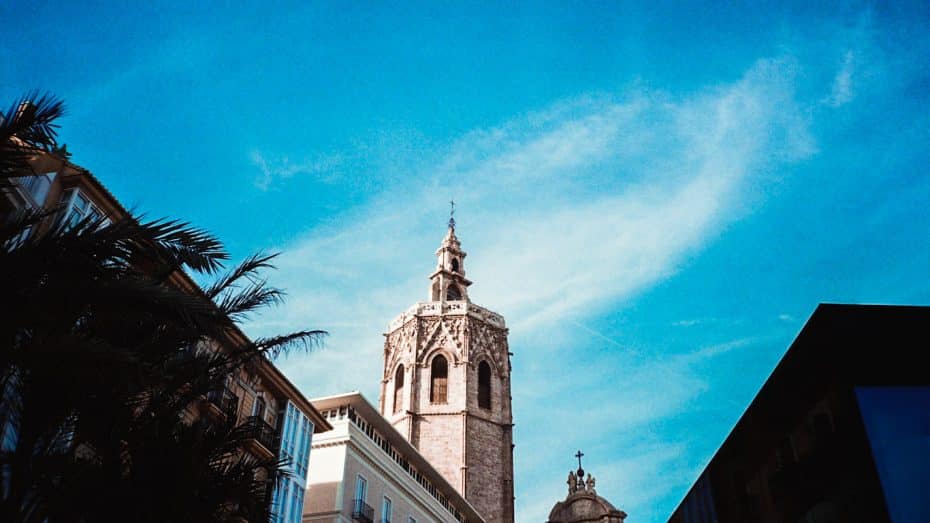
Located in Plaza de la Reina, El Micalet boasts a gothic architectural style with an octagonal base structure. The tower provides panoramic views of the city upon reaching the terrace. However, the spiral staircase with 207 steps could challenge the less athletic visitors.
A key aspect of El Micalet’s historical value includes its significant role during the War of Spanish Succession (1701-1714), where it served as a strategic lookout point to spot incoming enemies. Furthermore, there are several bells within the tower. The largest bell, named “Miguelete” or “Saint Michael,” weighed approximately 10,500 kilograms (23,148 pounds) and was installed in 1532.
To access El Micalet, visitors must enter through Valencia Cathedral’s Saint Mary’s Door on Calle del Miguelete. Once inside the cathedral complex, signs guide individuals to the tower entrance. El Micalet operates daily from 10:00 am to 1:00 pm and 4:30 pm to 7:30 pm on weekdays and from 10:00 am to 1:00 pm on Sundays and public holidays.
19. CCCC (Centro del Carmen de Cultura Contemporánea)
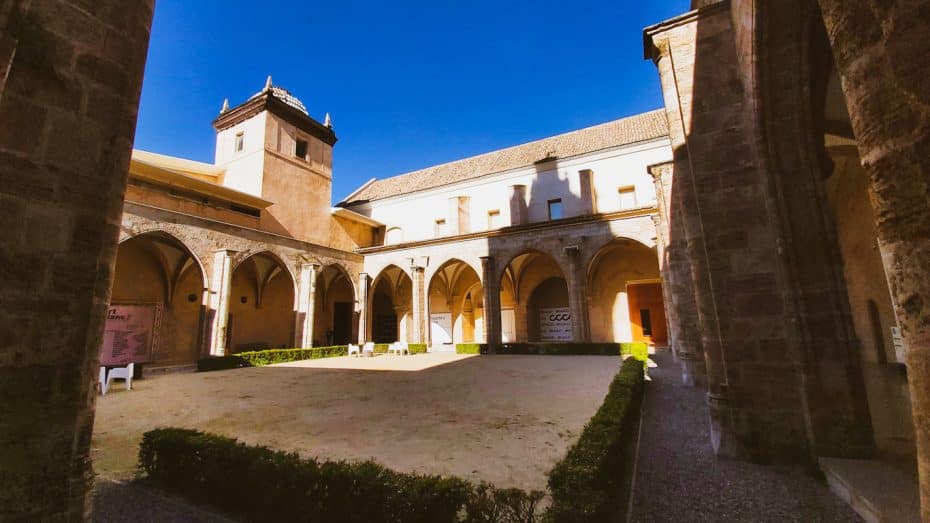
CCCC, or Centro del Carmen de Cultura Contemporánea, is in a former convent established in the 13th century (Convento del Carmen) in the Barrio del Carmen neighborhood.
The convent’s history spans several centuries and artistic styles such as Gothic, Renaissance, and Baroque architecture. It is recognized for its beautiful courtyard.
By presenting temporary exhibitions from local and international artists, CCCC contributes significantly to Valencia’s cultural life. Additionally, it frequently organizes events such as conferences, workshops, concerts, and performances that address current social issues.
Positioned at Calle del Museo 2, you can get to the CCCC via public transportation options such as bus lines 5, 28, 95, and N3 from Estación de Autobuses to Torres de Quart or metro lines 1, 2 to Plaça España station.
20. Valencia Port
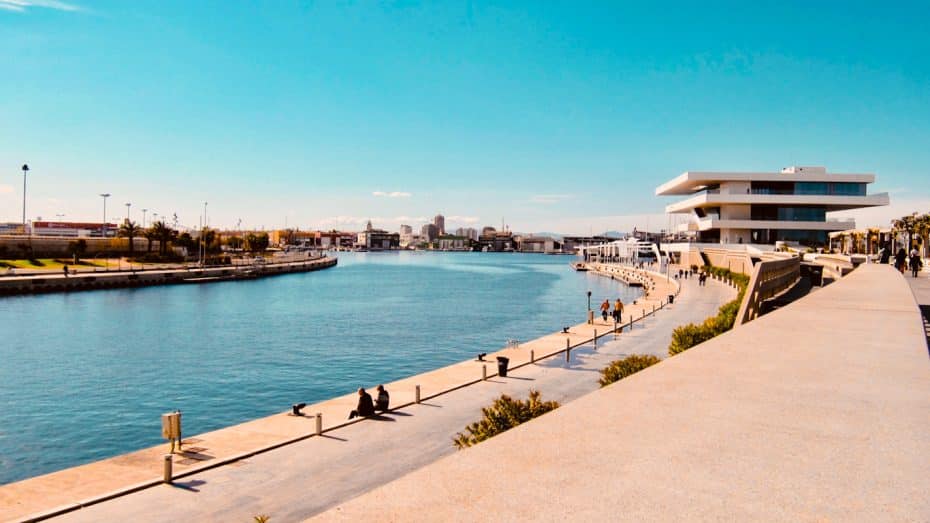
Established in the 14th century, this port was essential to Spain’s trade and maritime activities, especially during the Mediterranean Silk Road period. Ancient facilities, such as the House of Trade (Casa de la Contratación), testify to its historic importance.
The Royal Navy Shipyards, a prime example of Gothic civil architecture from the 15th century, remains an impressive sight within the Valencia Port premises. Designed by Ramón Paús in 1481, it consists of seven aisles that serve as evidence of its historic use to repair Mediterranean galleys and store naval supplies. Besides this architectural wonder, art lovers can visit the Veles e Vents Building, designed by David Chipperfield, which functions as an exhibition hall hosting cultural events regularly.
Located within the Cabanyal-Canyamelar district on Avenida Puerto and Paseo Marítimo, you can access the Valencia Port through diverse modes of transportation. Options include buses (lines 4, 19, 32), trams (lines 4 and 6), and Valenbisi bicycles with stations near the port area.
21. Museo Fallero de Valencia
The Museo Fallero is an essential attraction for anyone interested in learning about the history and culture of Valencia. Established in 1971, the museum showcases the Fallas Festival, a traditional Valencian celebration held annually in honor of Saint Joseph. The event dates back to the 18th century and involves the creation of large-scale sculptures called Fallas that depict satirical and political themes.
In the museum, one can find a remarkable collection of these sculptures, specifically the “ninots indultats,” which are individual figures saved from being burned at the end of each Fallas Festival since 1934. Each held represents the best artwork produced that year and provides a glimpse into their respective periods’ social and political contexts.
Several transportation options are available to reach the Museo Fallero de Valencia. One can take bus lines 13, 14, 15, or 95; alternatively, Metro Line 5 (Marítim-Serrería Station) is within walking distance.
The museum’s operating hours are typically from 10:00 am to 7:00 pm on Mondays through Saturdays and from 10:00 am to 2:00 pm on Sundays and holidays. Standard ticket prices are €2 for adults and €1 for children.
So, if you’re wondering what to see in Valencia in 2 days, this museum is a no-brainer.



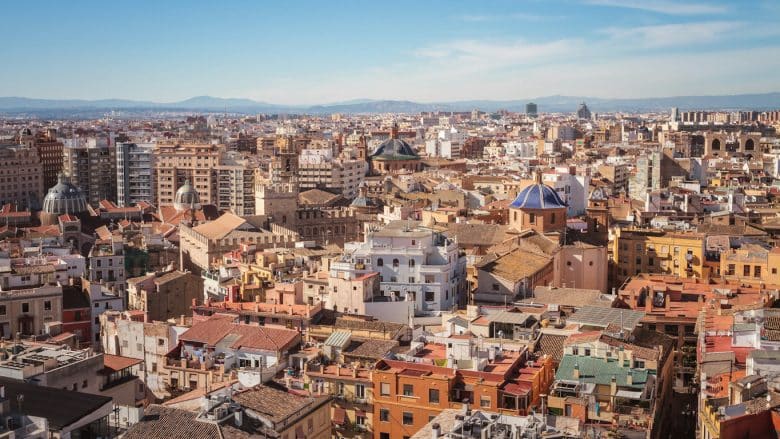

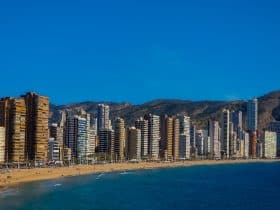
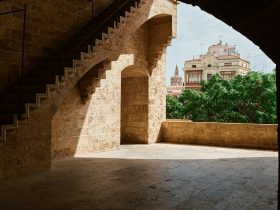
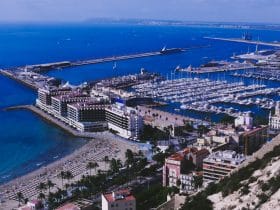


















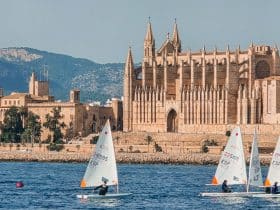
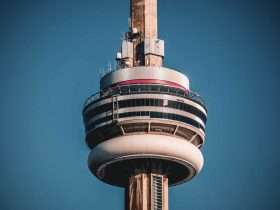
Leave a Reply
View Comments